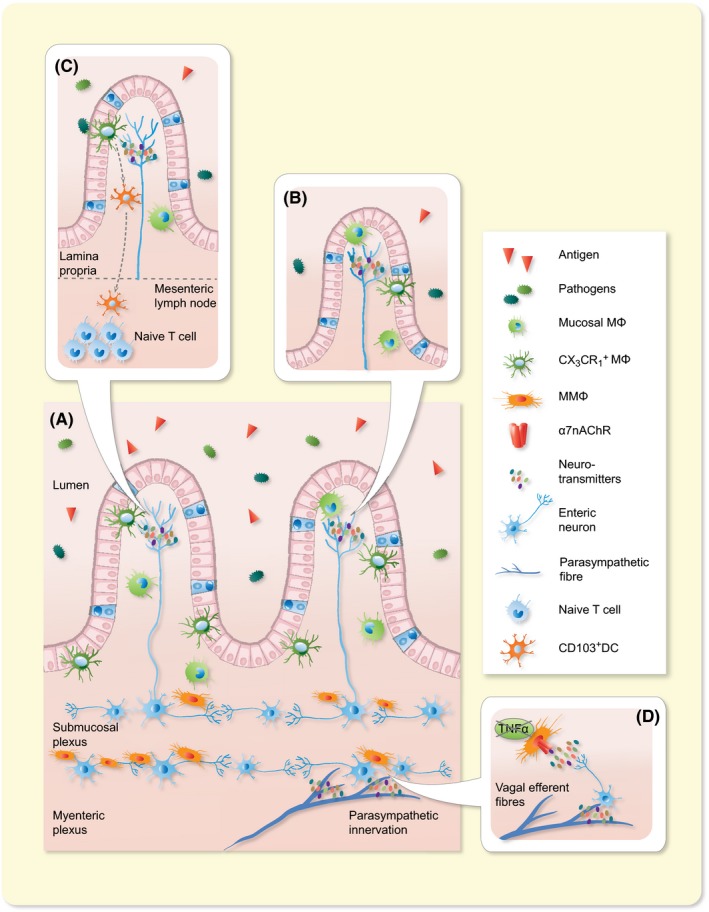Figure 3.

Schematic overview of the cross‐talk between the nervous and the immune system in the GI tract. The gastrointestinal tract is highly innervated by the autonomic nervous system and the enteric nervous system. A, Schematic representation of the intestinal wall with its different layers, showing the distribution of the intrinsic and extrinsic innervation and their relationship with the immune cells. Parasympathetic efferent fibres innervate the intestinal wall by contacting the enteric neurons located in the myenteric plexus region. B, In the mucosal villi immune cells, such as MMϕ and CX3CR1+ Mϕ, are instructed by neurotransmitters, like Ach, released by neuronal fibres. C, When the epithelial barrier is crossed by pathogens, CX3CR1+ Mϕ are able to migrate into the intestinal lumen in order to rapidly fight the infection and limit the number of bacteria entering in contact with the Lp. Once the antigen is trapped, it is passed to the CD103+ dendtritic cell (DC) which have migratory property. This population is capable to enter in the lymph and reach the mesenteric lymph node (MLN) where can prime T cell. D, In the myenteric plexus, close proximity between enteric neurons and resident Mϕ allow these cells to intercommunicate by secretion of neurotransmitters which influence the immune cells’ phenotype, mainly inhibiting TNFα production
